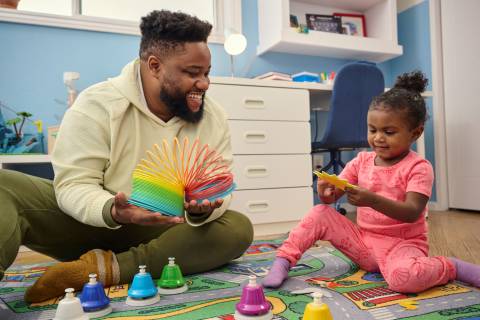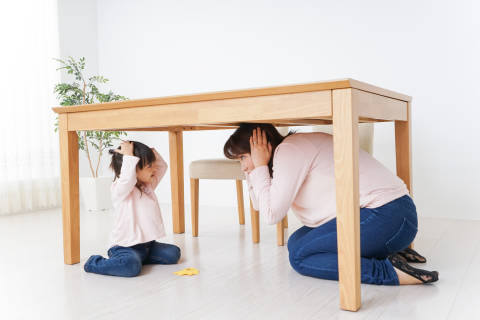As caregivers, we want to make sure that our children have all the tools they need to develop healthy and thriving relationships throughout their lives. By teaching children about boundaries, we can not only help keep them safe but also give them essential skills to connect with others.

Caregivers can start teaching children about boundaries during toddler or preschool years. As they get older, your conversation with your child about boundaries will change and evolve.
You can try starting with basic conversations about personal space and consent with your toddler. More complex conversations about emotional boundaries and respecting others’ feelings can be introduced during the preschool years and beyond. But as the caregiver, you know your child best and can adjust your conversation based on their personal needs. It can be helpful to talk about the different types of boundaries and provide some specific things they can say to keep those boundaries.
Physical boundaries relate to personal space, touch, and physical contact. Teaching children about physical boundaries helps keep them safe by allowing them to understand their own comfort levels, recognize when someone is crossing those limits, and know when to communicate their feelings or seek help from a trusted adult. It also helps them respect other people’s personal space.
Child-friendly language to help children respect personal space: “Everyone has their own personal space. It’s like an invisible bubble around us that we don’t want others to break. We need to respect each other's personal space by giving each other enough room to feel comfortable. The bubble is about one arm’s length away. Did you know that you have a personal space bubble too? If someone breaks your personal space bubble, you can tell them, ‘I need more space.’ If they stay in your bubble, you can tell an adult you know that you’re having problems with personal space.”
Child-friendly language to talk to children about consent and touching: “It’s important to ask for permission before touching someone. We should always respect when someone says ‘no’ or ‘stop.’ This is the same for you too. If you don’t want to be hugged or touched by someone, you can tell them, ‘Please don't touch me.’ Let a grown-up you trust know if someone touches you and you asked them not to.”
Emotional boundaries are about feelings and thoughts. To respect emotional boundaries, we can teach children to talk about how they feel and be kind to others when they share their feelings.
Child-friendly language to talk about respecting emotions: “Sometimes we feel sad, angry, or upset, and that’s okay. If you want some alone time or don’t feel like talking about it, you can tell me, ‘I need some space’ or ‘I don't want to talk right now.’ I will respect your feelings and give you the time you need. If someone tells you that they need space, it’s important to listen to them, as well.”
Social boundaries involve understanding appropriate behavior in different settings. Social boundaries help guide behavior in public spaces. For children, understanding social boundaries can be focused around being a good friend, sharing toys, and taking turns. As children get older, you can share more complex examples with them.
Child-friendly language to talk about sharing toys: “We take turns and share our toys with friends. It’s fun to play together and share, but sometimes we can also have toys just for ourselves that we don’t have to share. It’s okay to say ‘no’ when someone wants to play with your special toy. Just like you respect their ‘no’ when they don’t want to share their toys with you.”
Child-friendly language to talk about using kind words: “We can use kind words and say nice things to our friends. It’s important to speak gently and not say mean or hurtful things because we want to be kind to our friends.”
Child-friendly language to talk about taking turns in conversations: “When someone is talking, we listen and wait for our turn to speak. It’s polite to take turns in conversations and not interrupt.”
As much as possible, be consistent in talking about respecting boundaries. Show your child what respecting boundaries looks like and remind them often about the different boundaries you’ve discussed. You can also try teaching them a simple rhyme to help them remember to talk about their boundaries and respect the boundaries of others:
If someone gets too close or near, Remember, boundaries are here, Just say stop or simply no, And tell a grown-up that you know.






